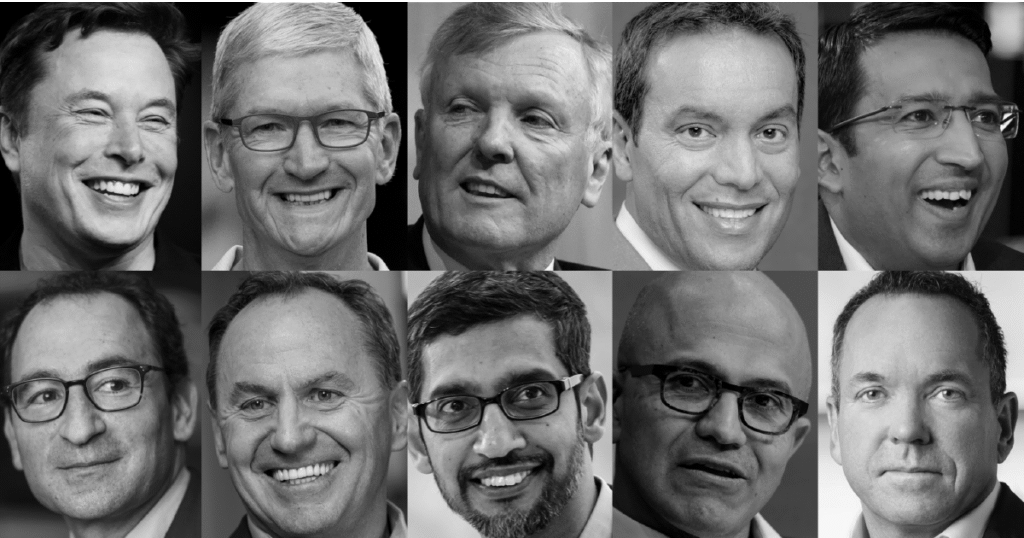Introduction: The Age of Influence
In today’s fast-paced business environment, influence has become a currency as valuable as capital. Consumers no longer interact with brands in a vacuum; they seek authenticity, trust, and relatability. This shift has propelled business leaders, especially CEOs and founders, into the spotlight like never before. They are no longer just strategic decision-makers behind closed doors. Today, they are the face, voice, and personality that defines a company’s identity in the marketplace.
From shaping public perception to driving company culture, CEOs are wielding influence beyond the boardroom. They engage on social platforms, speak at global conferences, appear in podcasts, and build personal brands that often eclipse the companies they lead. Why is this happening? Why do CEOs matter more than ever in shaping the future of business? Let’s explore.
The Evolution of CEO Influence
Traditionally, CEOs were seen as operational heads, focusing on corporate governance, financial strategy, and shareholder value. Public appearances were rare, and their influence was largely confined within their organization and investor circles.
However, the rise of social media, coupled with an increasingly connected global economy, changed everything. Consumers today want transparency, and they demand to know the people behind the products and services they use. Platforms like LinkedIn, Twitter, and Instagram have created a direct communication channel between leaders and the public.
As a result, CEOs now have the opportunity, and responsibility, to become storytellers, thought leaders, and trust-builders. Their voice can amplify brand values, inspire teams, and shape industry trends. In many ways, the personal brand of a CEO has become an integral part of the corporate brand.
Why CEO Visibility Drives Business Success
The question that many organizations ask is: Does CEO visibility truly impact the bottom line? Research and case studies increasingly suggest that it does. Here’s why:
1. Trust is Built on People, Not Logos
Consumers trust people more than faceless entities. A CEO who openly shares the company’s vision, challenges, and progress humanizes the brand. This transparency creates trust, which is a cornerstone of customer loyalty.
2. Investor Confidence and Market Stability
Investors often look beyond numbers. They seek confidence in leadership. A CEO who is respected, articulate, and influential in the industry instills greater trust among stakeholders. This often leads to stronger investor relationships and market resilience during challenging times.
3. Employee Engagement and Culture
Today’s workforce values purpose-driven leadership. Employees want to work for companies whose leaders embody integrity, innovation, and inclusivity. A visible and approachable CEO boosts morale and attracts top talent.
4. Media and Thought Leadership Opportunities
The media landscape loves strong personalities. A CEO who shares insights on trends, innovation, or social issues positions the company as an industry authority. This earned media coverage can translate into brand credibility and growth.

The Power of Personal Branding for CEOs
The rise of the “CEO influencer” is undeniable. Leaders like Elon Musk, Satya Nadella, and Indra Nooyi have built powerful personal brands that extend beyond their companies. These leaders shape conversations in technology, sustainability, and diversity, influencing industries at large.
Personal branding for CEOs is no longer optional. It is a strategic imperative. But it goes beyond posting on social media. It requires clarity on core values, consistent communication, and alignment with the company’s mission. The goal is authenticity. People can spot forced narratives, so CEOs need to share stories that reflect their real experiences, lessons, and visions.
Why Founders Have an Edge
While professional CEOs hold significant influence, founders often have a unique advantage. Their origin stories resonate with audiences because they represent courage, resilience, and vision. Founders can share the struggles of building a business from scratch, making their journeys relatable and aspirational.
Brands like Tesla, Spanx, and Airbnb owe much of their emotional appeal to the founders behind them. These leaders have crafted compelling narratives that inspire trust and admiration. In today’s competitive landscape, these stories can become a company’s most powerful marketing tool.
Key Channels Where CEO Influence Thrives
Building influence requires being present where audiences are most active. Here are some platforms and mediums where CEOs can maximize their impact:
A professional hub for thought leadership, LinkedIn allows CEOs to share industry insights, company updates, and personal reflections. This platform is critical for building credibility among peers, employees, and potential investors.
Podcasts and Webinars
Podcasts have exploded in popularity. Appearing on relevant shows or hosting a company-branded podcast helps CEOs engage deeply with niche audiences. It is an excellent medium for storytelling and thought leadership.
Social Media (Twitter, Instagram, YouTube)
Twitter remains a space for real-time commentary on industry developments, while Instagram and YouTube cater to a more visual and interactive audience. CEOs can leverage these platforms for behind-the-scenes glimpses, Q&A sessions, and trend discussions.
Industry Events and Panels
Speaking engagements at global conferences or niche industry events elevate a CEO’s status as an authority. These opportunities also provide valuable networking with other leaders and innovators.

Risks of Being Silent in Today’s Market
Just as visible CEOs can elevate brands, silent leaders risk falling behind. A lack of presence in today’s hyper-connected world can create gaps in perception. Competitors with more vocal leadership can dominate narratives, influence regulations, and capture media attention.
Moreover, during crises, an absent CEO can amplify uncertainty. Customers, employees, and investors expect clear communication in challenging times. Silence often leads to speculation and eroded trust.
Common Challenges CEOs Face in Building Influence
While the benefits are clear, becoming an influential leader is not without challenges:
- Time Constraints: CEOs already manage packed schedules, making content creation and engagement challenging.
- Fear of Missteps: The digital world is unforgiving. A poorly worded tweet can spark backlash, leading some leaders to avoid public platforms altogether.
- Balancing Authenticity with Professionalism: Striking the right tone is critical. Leaders must share personal stories without oversharing, and remain professional while staying relatable.
How Companies Can Support CEO Influence
Building a CEO’s personal brand should be a collaborative effort. Organizations can provide resources like content teams, PR consultants, and social media strategists to craft and manage communication. Training in media handling, crisis response, and storytelling is equally vital.
Companies that invest in CEO visibility reap long-term benefits in brand equity, talent acquisition, and market positioning.
The Future of CEO Influence
Looking ahead, CEO influence will only grow in importance. The rise of Gen Z consumers, who value transparency and purpose, means brands must showcase the human side of leadership. CEOs who embrace digital channels, advocate for social responsibility, and engage meaningfully will shape industries and set new standards of leadership.
AI, sustainability, and remote work are reshaping global markets. In such times, CEOs who guide conversations and share visions for the future will lead the charge in innovation and influence.

Final Thoughts
The role of a CEO has evolved far beyond operational oversight. Today, influence is a strategic advantage, and CEOs are the primary carriers of that advantage. Their ability to inspire, engage, and connect with diverse audiences determines how businesses thrive in an era driven by trust and transparency.
For businesses, the takeaway is clear: the spotlight is no longer optional. CEOs must step up, speak out, and build their influence if they wish to lead in the marketplace of the future.
Why This Conversation Matters Now
As competition intensifies and consumer expectations rise, influence is not a luxury; it is a necessity. CEOs who leverage their voice effectively can turn influence into tangible results: stronger customer loyalty, increased investor confidence, and an empowered workforce.
The question is no longer “Should CEOs be visible?” The real question is, “Can any leader afford not to be?”








